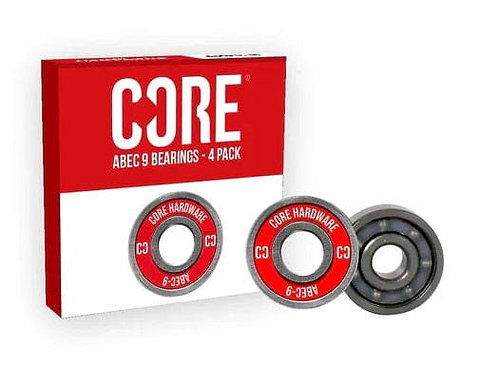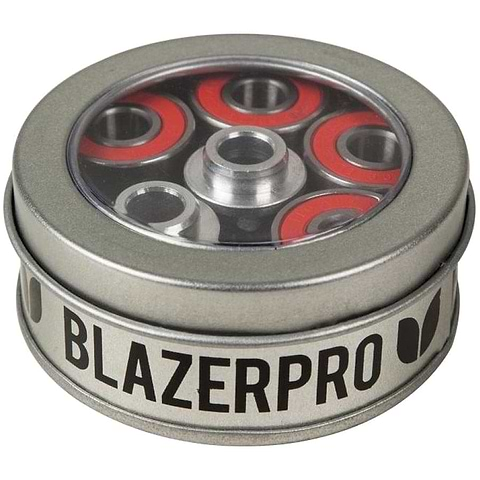Scooter Bearings Buying Guide
Scooter bearings are an often overlooked but essential part of your scooter. Choosing the right bearings can significantly impact your ride, influencing everything from speed and smoothness to control and durability. This guide breaks down everything clearly to help you pick the best bearings for your needs.
What are Scooter Bearings?
Scooter bearings are small metal or ceramic components fitted into your scooter's wheels, enabling them to spin smoothly around the axle. Each wheel contains two bearings. Without bearings, wheels wouldn’t rotate effectively due to friction between the wheel and axle.
Bearings consist of tiny steel or ceramic balls housed within metal rings. These balls roll freely, minimizing friction and helping wheels spin efficiently.

Why Bearings Matter
Good quality bearings improve your scooter’s performance in four main ways:
- Speed and Smoothness: Quality bearings reduce friction, helping wheels spin faster and smoother, which means less effort pushing and more time riding.
- Efficiency: With smooth bearings, you can easily maintain speed, making longer rides less tiring.
- Control: Reliable bearings increase your scooter’s responsiveness, making tricks and sharp turns easier and safer.
- Durability: High-quality bearings withstand regular riding stress and last much longer, saving you time and money.
Understanding ABEC Ratings
Stunt scooter bearings are often rated by the ABEC scale, which stands for Annular Bearing Engineering Committee. The ratings indicate the precision level of the bearings:
- ABEC-1 to ABEC-3: Basic precision, suitable for beginner and recreational riders. These bearings are budget-friendly but offer limited speed and smoothness.
- ABEC-5 to ABEC-7: Higher precision, providing smoother rides and better performance, ideal for intermediate to advanced riders.
- ABEC-9 and above: Highest precision, designed for professional riders seeking maximum speed and responsiveness.
It's important to note that ABEC ratings do not measure durability or materials used, so always consider bearing material and build quality.
Steel vs. Ceramic Bearings
- Steel Bearings: Most common, affordable, and durable enough for typical riding conditions. They perform well when regularly maintained and lubricated but can deteriorate if exposed to dirt or moisture.
- Ceramic Bearings: Premium bearings with ceramic balls instead of steel. They're lighter, create less friction, handle heat better, and resist rust and wear. Although pricier, ceramic bearings provide superior speed and durability, ideal for competitive or high-performance riding.
Sealed vs. Open Bearings
- Sealed Bearings: Protected by rubber or metal shields to keep dirt and moisture out. These bearings need less maintenance, making them perfect for outdoor riding or daily commuting.
- Open Bearings: Have removable shields, making cleaning and lubricating easier but requiring more regular maintenance. Open bearings perform better indoors or in clean conditions.
Choosing the Right Bearings for Your Riding Style
- Casual Riders: ABEC-3 or ABEC-5 steel bearings will suffice, offering good performance and affordability.
- Park or Trick Riders: Opt for ABEC-7 or ABEC-9 bearings, steel or ceramic, to enhance speed, responsiveness, and durability.
- Speed and Long-Distance Riders: Ceramic bearings or high-rated steel bearings (ABEC-9+) provide the best speed, efficiency, and minimal friction.

Installing and Removing Scooter Bearings
Scooter wheels usually have metal cores, making bearing installation slightly challenging compared to skate wheels with plastic cores.
Installation Steps:
- Gather tools: axle bolt, spare bearings or washers, hex key.
- Align bearings carefully into wheel core.
- Use axle bolt and spare bearings/washers to evenly press bearings into place, avoiding damage.
Removal Steps:
- Tools required: axle bolt, hammer.
- Position internal spacer to one side.
- Insert axle bolt and gently tap bearings out from the opposite side.
Always avoid using excessive force to prevent bearing damage.
Bearing Maintenance
Proper care extends bearing life significantly:
- Regularly clean bearings with a specialized cleaner or mild solvent.
- Apply suitable lubricant (oil for speed, grease for protection).
- Always dry bearings thoroughly after exposure to water or dampness.
Frequently Asked Questions (FAQ)
Q: How often should I replace my scooter bearings?
A: Replace bearings when they become noticeably noisy, slow, or damaged. Regular riders typically replace bearings every 6-12 months.
Q: Can I use skateboard bearings on my scooter?
A: Yes, as long as they are standard 608 bearings, they will fit most scooter wheels.
Q: What's the easiest way to clean scooter bearings?
A: Remove bearings from wheels, soak them in a bearing cleaning solution or mild solvent, dry thoroughly, and apply fresh lubricant.
Q: Are ceramic bearings worth the extra cost?
A: For competitive riders or those seeking maximum performance, ceramic bearings are worth the investment due to their enhanced speed, durability, and reduced friction.
Investing time in choosing and maintaining the right scooter bearings significantly enhances your stunt scooter's performance. Understanding bearing types, ABEC ratings, and correct maintenance practices ensures your scooter rides smoothly and safely for years to come.

